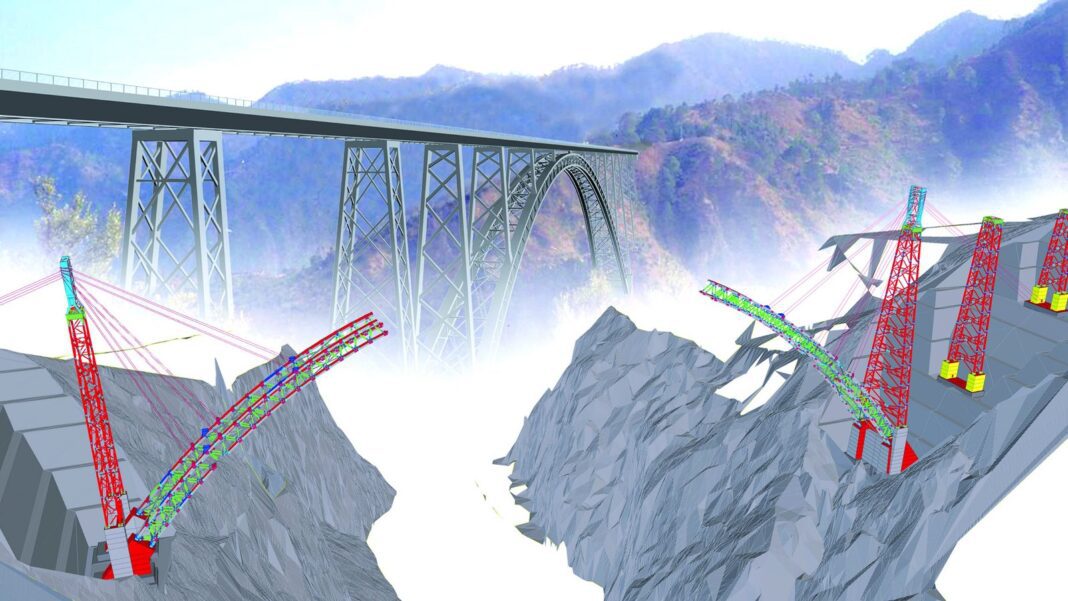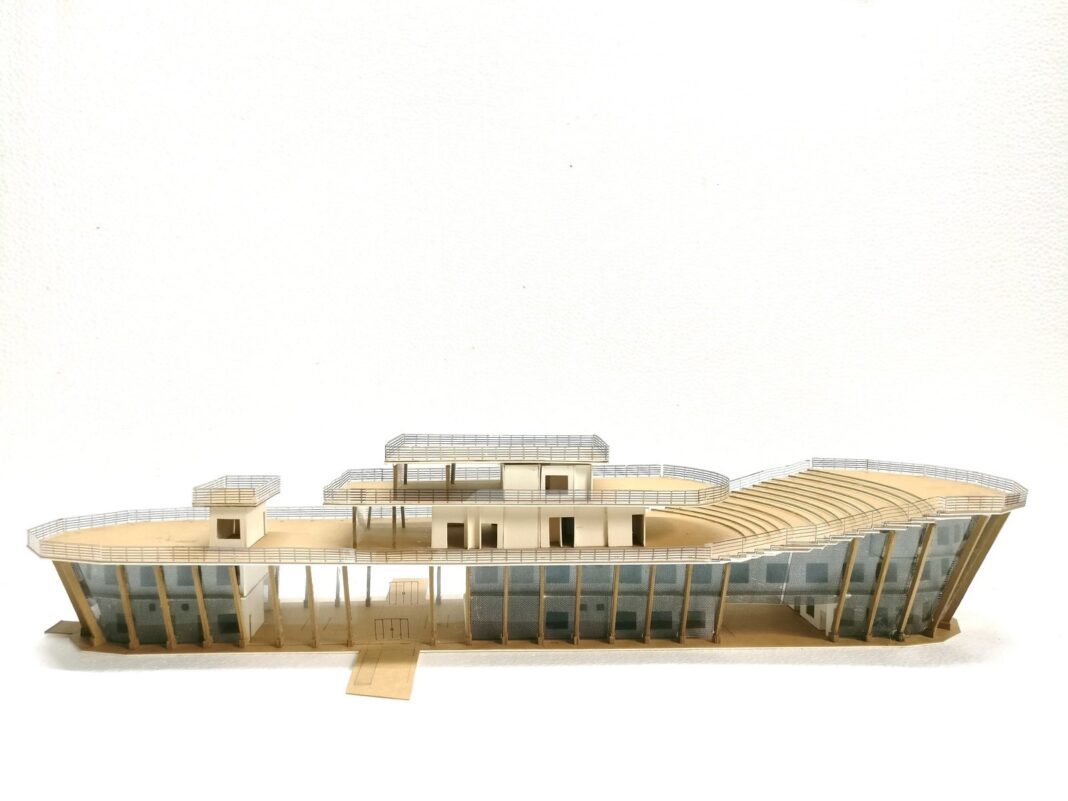Construction of road or rail bridges, like every new infrastructure is an exceedingly complex process. As the demand for transportation rises, connecting remote locations, complex bridge structures now span over massive water bodies or deep troughs and valleys in mountain regions. Hence, bridge construction projects, necessitate seamless and free-flowing communication among different stakeholders on a real-time basis. This is because even the slightest of error or delayed information can set a project back with costly delays or rework, thus adversely affecting project timeline and profitability.
A lot of these challenges can, however, be effectively mitigated once we move from paper-based workflows to integrated and connected data models. Trimble’s Tekla Structures offers an intelligent, parametric Bridge Information Modelling (BrIM) solution for the constructible design of all bridge types, sizes, and materials. It is a breakthrough product in digitalizing bridge construction with cutting-edge, amazingly accurate and highly detailed 3D models.


What is BrIM?
BrIM, or Bridge Information Modelling is an advanced modelling solution that is customized for bridge projects. It not only provides a comprehensive representation of the physical and functional characteristics of a bridge asset but also records information for its entire lifecycle, and this helps in improving the efficacy of the entire construction workflow, which in turn leads to reduced cost and early completion of the project. BrIM by Tekla Structures generates integrated and connected 3D models, which in turn enable the construction of highly complex bridge construction projects with greater efficiency and precision.
Every infrastructure developer around the world jostles for one overarching goal, which is to deliver the project on time and within budgets. This applies as much for tall skyscrapers as it does to complex bridges. A growing majority of them are now also striving for sustainable and environment-friendly construction. Use of cutting-edge BrIM software helps bridge project owners achieve both these goals.
BrIM Principles – Open approach, standardized data, Greater efficiency throughout the workflow
The main principle which governs BrIM is that the entire lifecycle of bridge construction, from design to engineering process to maintenance, is amalgamated into one software. It helps streamline construction processes from start to finish and maintenance and makes efficient collaboration possible between all project parties, including relevant authorities. Upon completion, BrIM serves as a digital documentation tool for smart facility management too.

One of the most significant advantages of BrIM is that it streamlines the design phase and avoids multiple inputs of the same data and duplication errors. In addition to this, BrIM supports data standardization, which enhances collaboration among different stakeholders and allows interoperability, which enables it to work seamlessly across a wide range of construction software and hardware. The same model can connect and interact with a variety of modern construction tools: from 3D printing and Augmented Reality (AR) tools to connected sensors and devices that make up the Internet of Things (IoT).
Does the software do everything you need – manages changes, LOD, future-ready?
The core idea of BrIM is that you can have the entire bridge in one software. This way, precast concrete or cast in place modelling, rebar, steelwork and steel connections, formwork and even construction planning schedules – all of it – can be done in one software, no matter what kind of bridge you’re building. This helps all project parties collaborate without delays, everyone always has access to up-to-date information, and clash-checking is a breeze.
In bridge design, changing one detail might affect various others as well. With the right kind of BrIM, the changes can be made and managed all on one software, without the need to keep on reprinting countless stacks of paper.
Having the drawings and schedules of quantities always updated and representing the model accurately is a must. On top of this, automatic updates ensure all changes are immediately delivered to all project parties, reducing risk of rework throughout the process. A great example is when the concrete geometry needs to change, the reinforcement adapts to the new shape.


Due to high Level of Development (LOD), BrIM boosts the constructability of bridge design with accurate information. As stated earlier, it also brings consistent documentation available to all parties regardless of which software they use. Accurate, data-rich models and simulations allow one to estimate the material needed, which greatly aids steel and rebar workshops and precast processes.
Fabrication information can be organized and managed according to project progress, and hence wastage can be avoided along with minimum delays in the project schedule. With BrIM, it is possible to compress project schedules due to a more efficient workflow, accurate information, and timely communication.
BrIM allows bridge owners to have easy access to data-rich, as-built models of their asset long after the construction has been completed. The stored data is routinely updated and can be easily and effectively utilized for smart asset management. In other words, BrIM can potentially lead to the construction of intelligent bridges in the future that would communicate their health status on an ongoing basis for optimal maintenance.
BrIM can capture the structure and alignment of the road, railway, or the terrain – depending on the kind of bridge you are building. All input, ranging from geo models to scanned images, can be utilized in ways that physical drawings cannot compete against. A common BrIM language enables authorities, governments, municipalities, and industries to procure and record data of bridge projects better during construction. With bridge information modelling, inspections, maintenance, and repair can be managed efficiently and purposefully, as all construction stages have already been reliably documented and are easily available on hand.


Seeing is believing
An excellent example of BrIM in action is its use in the construction of Chenab Bridge in Jammu & Kashmir, the tallest and longest-spanning railway bridge of its kind in the world. Use of intelligent parametric Tekla Structures has allowed the construction team to execute logistics and optimize schedules in harsh mountainous terrain. BrIM can capture the alignment of the road, railway, or the terrain – depending on the kind of bridge that is to be constructed. The bridge, erected on Himalayan bedrock with foundations approximately 40 metres high and 50 metres wide, the arch and piers of the bridge are masses of steel trusses. In contrast, the foundations and the approach viaduct piers are made of concrete.
The arch is erected with a cableway crane, after which the deck is then launched into place and joints assembled with a total of 600,000 bolts! This project is also a great example of Green construction, which saves materials, time, labor, money and ensures nearly zero waste using technology. BrIM was used for a complete simulation before the construction started, detailed 3D models allowed a high level of development (LOD) and accuracy of the model made it most suitable to be used for fabrication in the temporary workshops on site itself. The Chenab Bridge fully demonstrates the value that BrIM brings to modern bridge construction. The ever-rising costs and complexity of these structures demand solving of problems problem solving before they are manifest in real life. Bridge Information Modelling (BrIM) aims to solve the problems in advance and adjusting is smooth and easy along the process.


Director Marketing, Trimble Buildings)






